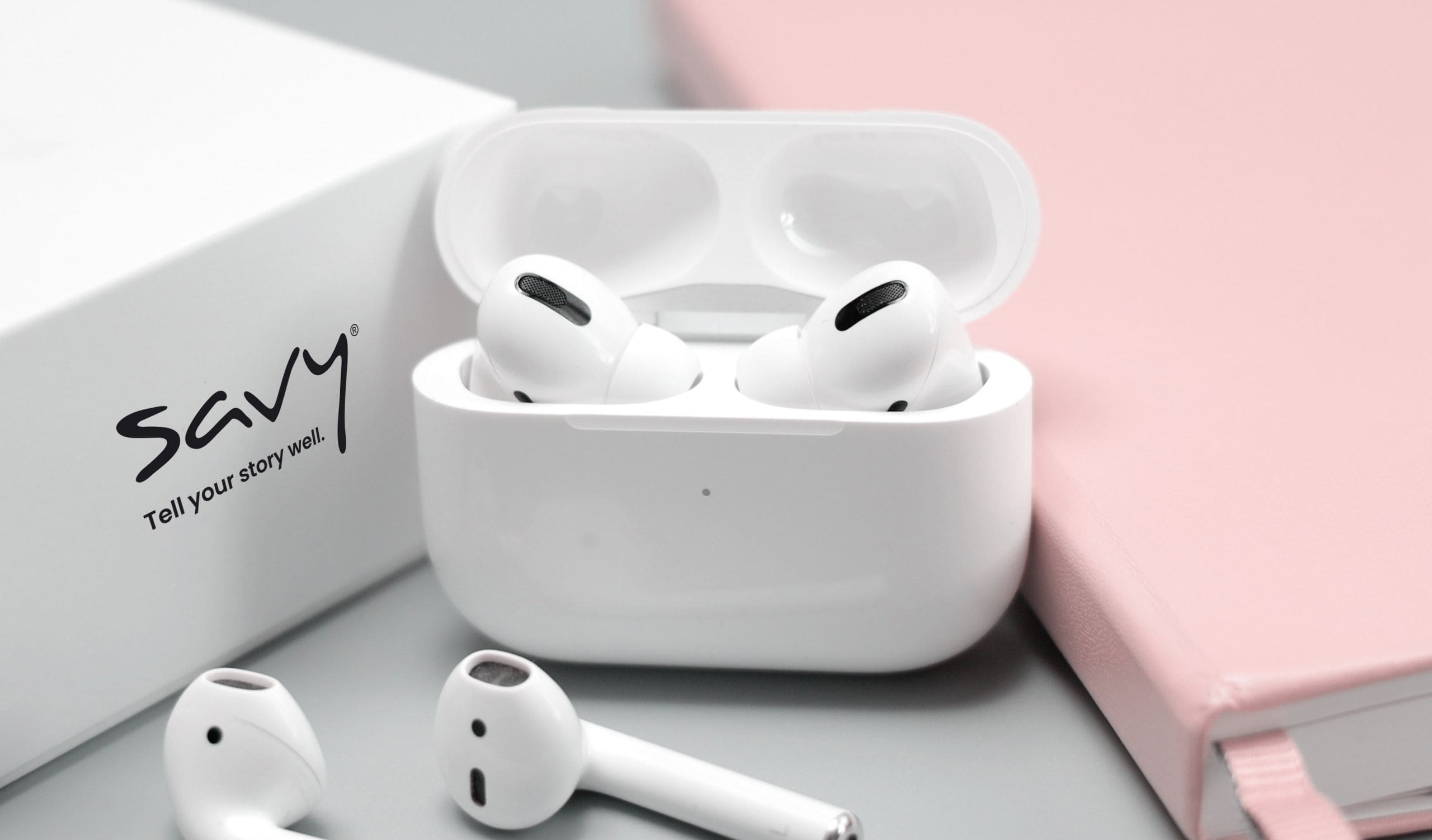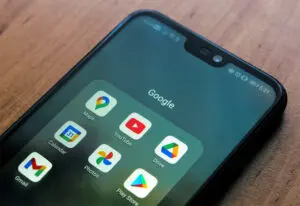
Sonic Identity: Could Sound Be the Secret to a Strong Brand Identity?
“Audio is just a great medium for advertising because it’s personal, and it’s all happening in your imagination.”
The human body has five basic senses: sight, smell, touch, taste, and hearing. In today’s world, companies are engaging these five senses like never before. But hearing is taking center stage. With people always on the move, things like trendy smart speakers, podcasts, and music streaming now play an instrumental role in the world of brand recognition. By brands telling their story through an auditory experience, they create a sonic identity that customers and clients can recognize the next time they hear it. But does every brand story need a sonic identity?
We all deserve to be heard. And your sonic identity can help make your brand synonymous with the sounds your customers or clients will hear. How you make a sonic identity is a different story. And there’s plenty of industry-leaders that can teach us how to do it.
A brief history of sonic identity
Sonic branding has been around for a long time. The songs and jingles that make up your childhood are proof of that. Think of the sounds you remember: your mother singing you to sleep. A teacher calling your name in front of a classroom. A tv or radio jingle that you’ll never forget. These memories stand out, staying with us long after they’ve come to pass. For decades, global brands like Coca-Cola, Skype, and McDonald’s have used music to create their sonic identities. Even an insurance company like Nationwide has used the same “Nationwide is On Your Side” jingle for the last fifty years.
And there’s science behind the lasting power of audio. Music can evoke specific memories, taking us back to moments of joy, happiness, and comfort. When brands reach consumers on an emotional level through song, they’re also creating a sonic identity that could define them for years to come.
Sound examples of sonic branding
Think about the fizz of Alka-Seltzer, the reassuring Nationwide jingle, or the metallic clanging of Pixar’s now-famous lamp. What brands are right for the sonic industry? The answer: mostly, everyone.
Songs and jingles
We’ve already mentioned how songs and jingles were the pioneers of sonic branding. But how are they evolving? According to Forbes, more Americans than ever are watching content through streaming services rather than basic cable. That’s because they can binge-watch their shows faster and without commercials. Unfortunately, that means they’re less likely to watch your commercials and ads, which means they’re less likely to remember your brand. So how are brands reaching consumers with their advertisements? Podcasts and music streaming services.
With the podcast industry picking up steam year after year and music streaming services dominating our ear lobes, brand jingles have found new mediums. By pitching their brands in ads before or after our favorite podcasts or songs, sonic signatures are leaving their mark. Now, we don’t even have to hit the play button. All we have to do is ask.
Voice assistants
Do you remember the first time you heard Siri’s voice?
Almost immediately, the tech world associated the voice of Apple’s personal assistant with all of their products and became the brand’s sonic identity overnight. Now, hearing Siri’s voice come from something that’s not an Apple product might be considered blasphemous.
Soon after, Microsoft, Google, and Amazon all released their versions of personal assistants. Whether you’re asking Siri, Cortana, Google, or Alexa for some help, each one has become synonymous with their company’s brand or products. The personalized assistants each have their own voices and create an iconic sonic identity that brings brands to life before our ears.
Having a personal assistant may help us feel like we’re not alone, and are getting stuff done faster. But other brands are using music to reassure our financial well-being.
Credit cards connect with our emotions. Wait, what?
Credit card brands like Mastercard now have their own sonic identities, and according to Chief Marketing Officer, Raja Rajmannar, the brand is all about human connection. When asked to describe Mastercard’s sound logo, Rajmannar gave a lengthy response.
“The Mastercard sound logo is universal, it is unifying, it is inclusive, it is inspiring,” said Rajmannar. “It is memorable; it is pleasant, it is neutral, it is adaptable, it is versatile.”
That’s a lot of words to describe a jingle, but Mastercard put plenty of work into their unique sound. The credit card company even hired professional musicians like Mike Shinoda of Linkin Park to produce their new anthem. After an 18-month process searching for the sound, they landed on a tune that’s as adaptable as it is memorable.
Mastercard’s sonic identity is their signature touch and aims to provide customers with a sense of reassurance on every purchase. Their first-ever audio press release introduced audiences to various styles of the melody for different transactions around the world. Whether you’re in Mumbai, Bogota, or San Francisco, the melody stays the same but fits the place you’re in with a region’s familiar instruments and styles.
And with voice shopping expected to hit $40 billion worldwide by 2022, Rajmannar and his team are ready to soothe your ears with the swipe of a card. But how can your brand be prepared to have a sound of their own?
How to convey your brand through sound
You want your brand’s sound to resonate so that people recognize it the moment they hear it. How you do that is focusing on these core principles.
The melody
When you hear a familiar melody, it connects with the hippocampus of our brains. Whether it’s another Grammy-award winning single from Beyoncé or Mastercard using the sound of music for a new purchase, melodies stick with us for a long time. Try jumping into a think tank with a live band or music producer, and you’re bound to discover something special.
Sonic logo expedites brand recognition
Your sonic identity should have a sonic logo so that people know what your brand sounds like the moment they hear it. For example, Mastercard implements shorter sounds from their new song without straying away from its core melody. By pulling excerpts, they can diversify their sonic signature in a variety of auditory environments. This strategy creates a clear-cut sonic logo. The logo then greets every purchase with a sonic signature, but not every sonic signature is the same. In the same way, not every purchase is alike.
When you hear the same signature sound over and over again, a brand becomes synonymous with its sonic logo. But as we’ve already mentioned, a sonic identity is much more than just a 2-second excerpt.
Target your audience
What are your customers listening to? It’s essential to identify your target audience because different generations in various regions of the world don’t always listen to the same thing. Once you do that, digital music platforms like Spotify help you track what certain cities around the world are listening to most. For example, if your audience is in Portland and you need some inspiration, look no further than Spotify’s “The Sound of Portland Oregon US” playlist. But if your clientele is in Boston, this map will take you live inside the ears of a city 3,000 miles away.
Create something easy to remember
There’s no reason to get avant-garde. Your sonic identity should be simple and identify your brand. Repetitive beats and memorable song lyrics allow your audience to retain your brand even more. If your sonic identity is a single sound or a voice, make sure it’s soothing to hear. And by all means, keep it consistent.
Turn up the volume
Your customers deserve to hear from you. And you deserve to be heard. How you go about doing that is creating a sonic identity that reaches them on an emotional level. It’s about providing reassurance, information, and something memorable that doesn’t get annoying. Once your brand defines how it wants to sound, you can create your auditory DNA.
From the sound logo to the musical inspiration, it’s all about staying authentic while producing a unique sonic brand. And remember, you don’t have to be like Mastercard and spend $15 million to do it. But a killer content strategy team can certainly help.
Recent Posts
How to Rebrand Your Instagram for Better Engagement and Brand Recognition
Your Instagram presence can act as a beacon for brand recognition and customer engagement. It’s about painting a picture so compelling that your audience cannot help but be drawn to […]
Read MoreFrom Clicks to Conversions: The Science of High-Performing Digital Ads
The journey from interest to purchase is often paved with digital advertisements. However, not all digital ads are crafted equally. While some fade into the background, others command attention and […]
Read MoreBrand Consistency Examples That Will Make You Rethink Your Marketing Strategy
A consistent and strategic brand identity across all platforms is not just beneficial; it’s essential. By exploring real-world brand consistency examples, we uncover the immense power of maintaining a coherent […]
Read More3 Ways to Transform Blogs With SEO and Make Google Love Your Content
As marketers and business owners, our goal is to ensure the blogs we publish confidently stride into the spotlight of Google’s top search results. Achieving this requires great content, but […]
Read More



